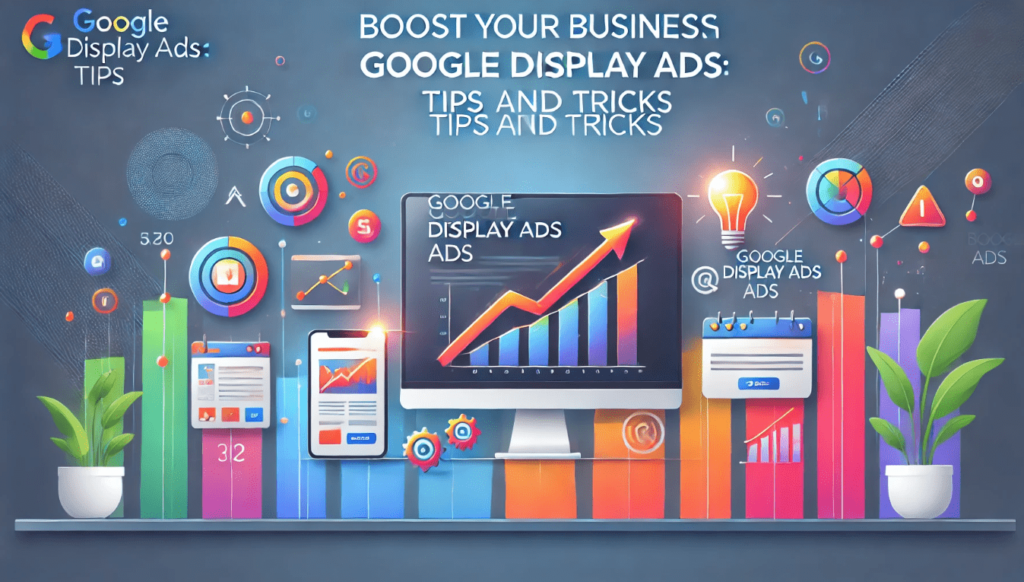In the dynamic world of digital marketing, leveraging the right tools can significantly boost your business’s visibility and conversion rates. Google Display Ads, part of the Google Ads platform, is a powerful tool that helps businesses reach potential customers across millions of websites, apps, and videos. This article explores essential tips and tricks to maximize the effectiveness of your Google Display Ads campaign.
Understanding Google Display Ads
Google Display Ads allow businesses to promote their products or services through visually appealing ads that appear on Google’s vast network of partner websites. Unlike traditional search ads, which target users based on keywords they type into the search bar, display ads are shown to users who are browsing websites, watching videos, or using mobile apps. This approach offers unique advantages, such as broader audience reach and diverse ad formats, including banners, images, and videos.
Benefits of Google Display Ads
- Wide Reach: With access to over 90% of internet users globally, Google Display Ads ensure your business gets maximum exposure.
- Targeting Options: Google provides various targeting options like demographics, interests, topics, and remarketing, allowing precise audience targeting.
- Cost-Effective: The flexible pricing model enables businesses to set budgets and bids that align with their marketing goals, ensuring cost-efficiency.
- Engaging Formats: From static images to dynamic HTML5 ads and videos, the diverse ad formats help create engaging content that captures users’ attention.
Setting Up Your Google Display Ads Campaign
To get started with Google Display Ads, follow these steps:
- Define Your Goals: Clearly outline what you want to achieve with your display ads. Common goals include brand awareness, lead generation, or driving website traffic.
- Choose Your Target Audience: Utilize Google’s targeting options to define your audience. You can target based on demographics, interests, topics, or even specific websites.
- Create Engaging Ad Creatives: Design visually appealing ads that resonate with your target audience. Use high-quality images, compelling headlines, and clear calls-to-action.
- Set Your Budget and Bids: Determine your daily or campaign budget and choose a bidding strategy that aligns with your goals. Options include cost-per-click (CPC), cost-per-thousand impressions (CPM), or cost-per-acquisition (CPA).
- Monitor and Optimize: Regularly review your campaign performance using Google Ads’ reporting tools. Adjust your targeting, bids, and ad creatives based on data insights to improve results.
Tips and Tricks for Maximizing Google Display Ads
- Leverage Remarketing: Remarketing allows you to target users who have previously visited your website or interacted with your content. This strategy keeps your brand top-of-mind and encourages repeat visits and conversions.
- Utilize Responsive Display Ads: Google’s responsive display ads automatically adjust their size, appearance, and format to fit available ad spaces. By uploading various headlines, images, and descriptions, you can let Google optimize your ads for better performance.
- Experiment with Ad Formats: Don’t limit yourself to a single ad format. Test different formats like banners, videos, and interactive HTML5 ads to see which ones resonate most with your audience.
- Focus on High-Quality Images: Visual appeal is crucial for display ads. Use high-resolution images that are relevant to your product or service. Avoid cluttered visuals and focus on clean, professional designs.
- A/B Testing: Conduct A/B tests by creating multiple versions of your ads with slight variations in images, headlines, or calls-to-action. Analyze which versions perform best and refine your strategy accordingly.
- Optimize Landing Pages: Ensure that the landing pages your ads direct to are relevant, user-friendly, and optimized for conversions. A seamless user experience can significantly impact your ad’s effectiveness.
- Monitor Ad Frequency: Be mindful of ad frequency to avoid overwhelming your audience. High frequency can lead to ad fatigue, where users become annoyed and start ignoring your ads. Use frequency capping to control how often your ads are shown to the same user.
- Geo-Targeting: If your business operates in specific regions, utilize geo-targeting to ensure your ads reach the right audience. This is particularly useful for local businesses looking to attract nearby customers.
- Use Custom Affinity Audiences: Create custom affinity audiences to target users based on their specific interests and behaviors. This level of granularity helps tailor your ads to highly relevant audiences.
- Analyze and Adjust: Regularly review your campaign’s performance metrics, such as click-through rates (CTR), conversion rates, and return on ad spend (ROAS). Use these insights to make data-driven adjustments to your strategy.
Common Pitfalls to Avoid
- Ignoring Mobile Users: With a significant portion of internet traffic coming from mobile devices, ensure your ads are mobile-friendly. Test your ads on various devices to guarantee a seamless experience.
- Overlooking Ad Placement: Not all websites are created equal. Use Google’s placement reports to analyze where your ads are being shown and exclude low-performing sites or those that don’t align with your brand.
- Neglecting Negative Keywords: While negative keywords are more common in search campaigns, they can also be useful in display campaigns. Exclude irrelevant keywords to prevent your ads from appearing in unsuitable contexts.
- Underestimating Budget Allocation: Proper budget allocation is crucial for campaign success. Avoid setting your budget too low, which can limit your ad’s reach and effectiveness.
- Not Utilizing Conversion Tracking: Set up conversion tracking to measure the success of your campaigns accurately. This data is essential for optimizing your strategy and demonstrating ROI.
Conclusion
Google Display Ads offer immense potential for businesses looking to expand their digital footprint and drive meaningful results. By understanding the platform’s capabilities, setting clear goals, and implementing best practices, you can create compelling display ad campaigns that resonate with your target audience. Remember to continuously monitor and refine your strategy based on performance data to ensure ongoing success. With the right approach, Google Display Ads can be a game-changer in your digital marketing arsenal, helping you achieve your business objectives and stay ahead of the competition.

